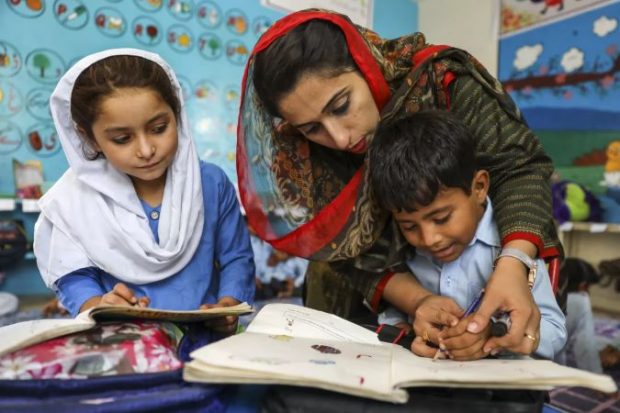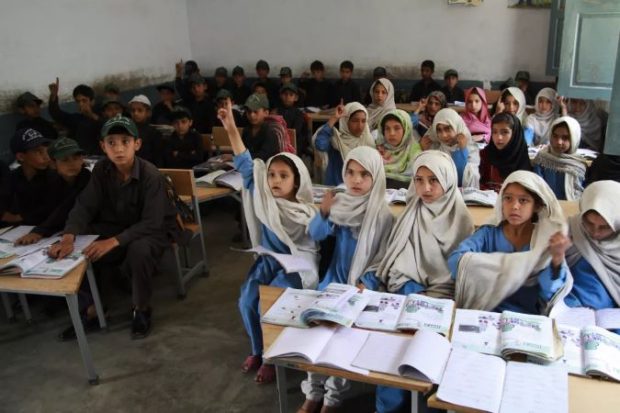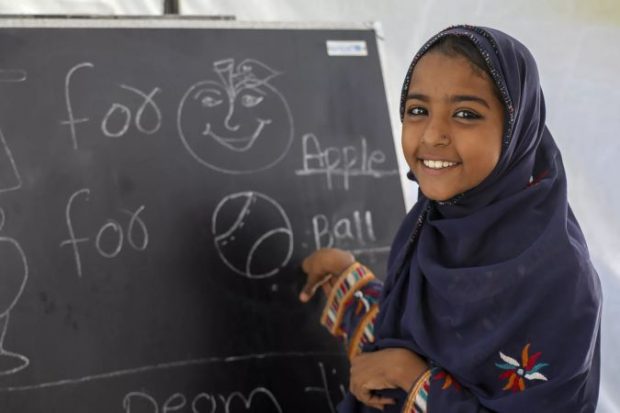Pakistan: 22.8 million children are out of school

School children in class Pakistan (Photo by UNICEF)
By Nasir Aijaz
The AsiaN Representative
ISLAMABAD: Pakistan is facing a serious challenge to ensure all children, particularly the most disadvantaged, attend, stay and learn in school. While enrollment and retention rates are improving, progress has been slow to improve education indicators in Pakistan, says a UNICEF report.
According to the report, currently, Pakistan has the world’s second-highest number of out-of-school children (OOSC) with an estimated 22.8 million children aged 5-16 not attending school, representing 44 per cent of the total population in this age group. In the 5-9 age group, 5 million children are not enrolled in schools and after primary-school age, the number of OOSC doubles, with 11.4 million adolescents between the ages of 10-14 not receiving formal education. Disparities based on gender, socio-economic status, and geography are significant; in Sindh, 52 percent of the poorest children (58 percent girls) are out of school, and in Balochistan, 78 percent of girls are out of school.

School children in Pakistan (Photo by UNICEF)
Nearly 10.7 million boys and 8.6 million girls are enrolled at the primary level and this drops to 3.6 million boys and 2.8 million girls at the lower secondary level.
Gaps in service provision at all education levels is a major constraint to education access. Socio-cultural demand-side barriers combined with economic factors and supply-related issues (such as availability of school facilities), together hamper access and retention of certain marginalized groups, in particular adolescent girls. Putting in place a credible data system and monitoring measures to track retention and prevent drop-out of out-of-school children is still a challenge, the UNICEF report says.

A school child in Pakistan (Photo by UNICEF)
The report further states that at systems level, inadequate financing, limited enforcement of policy commitments and challenges in equitable implementation impede reaching the most disadvantaged. An encouraging increase in education budgets has been observed though at 2.8 percent of the total GDP, it is still well short of the 4 percent target.










































